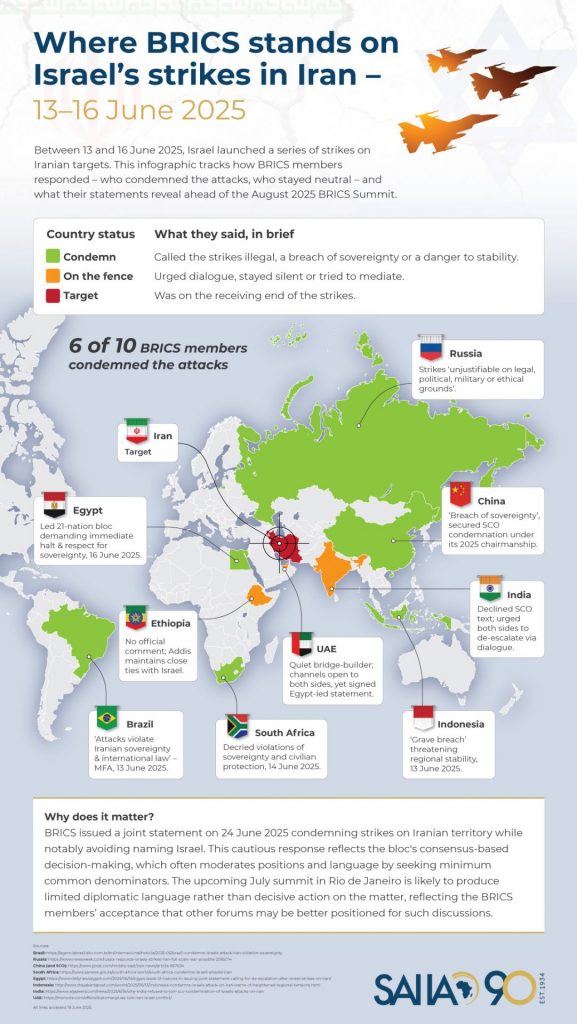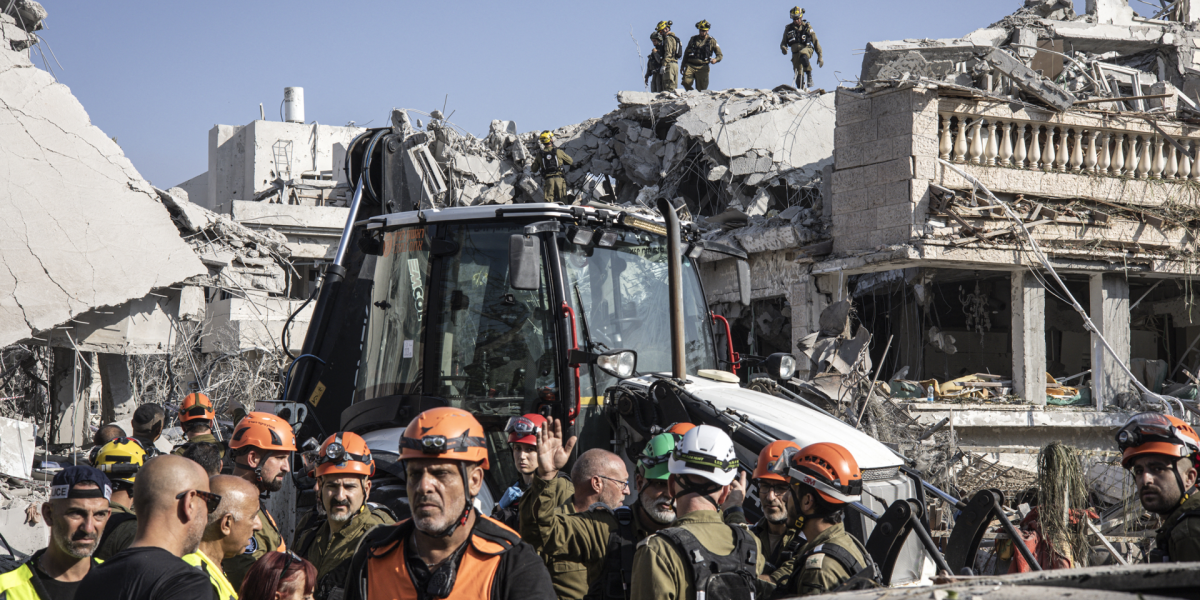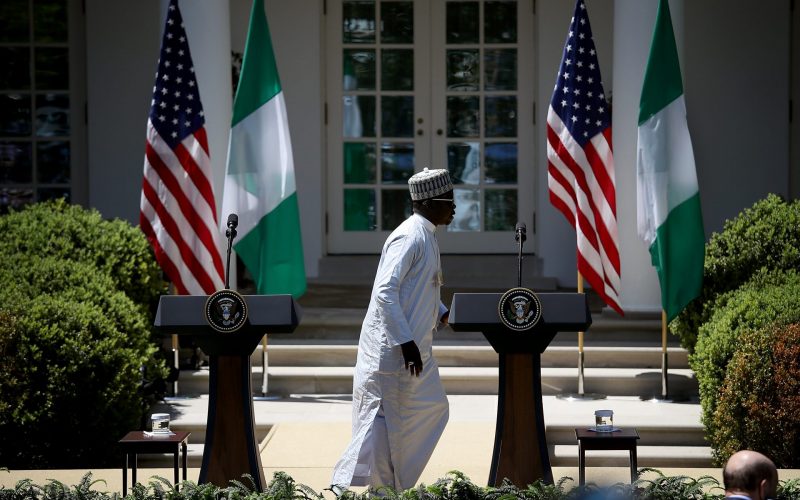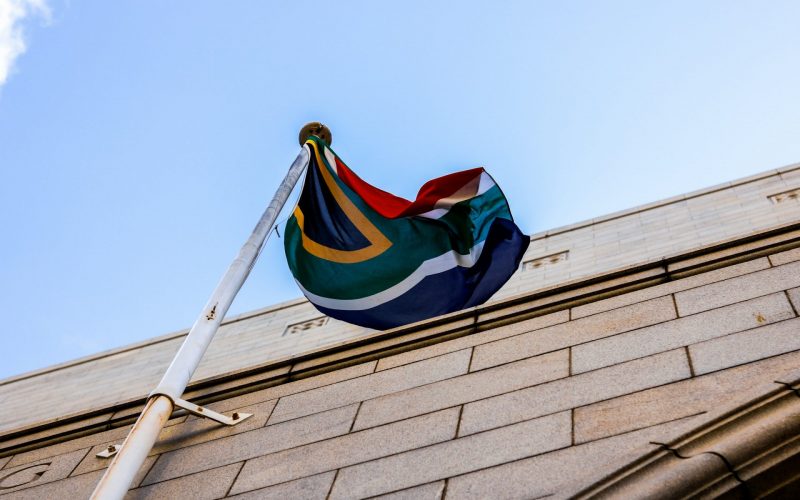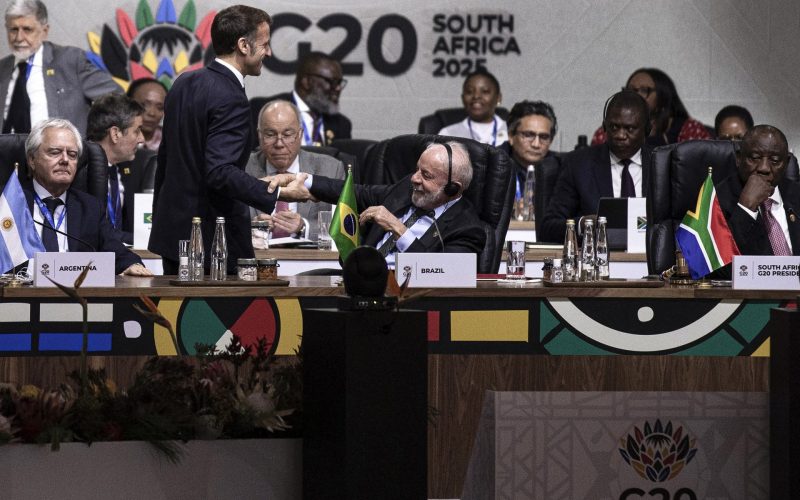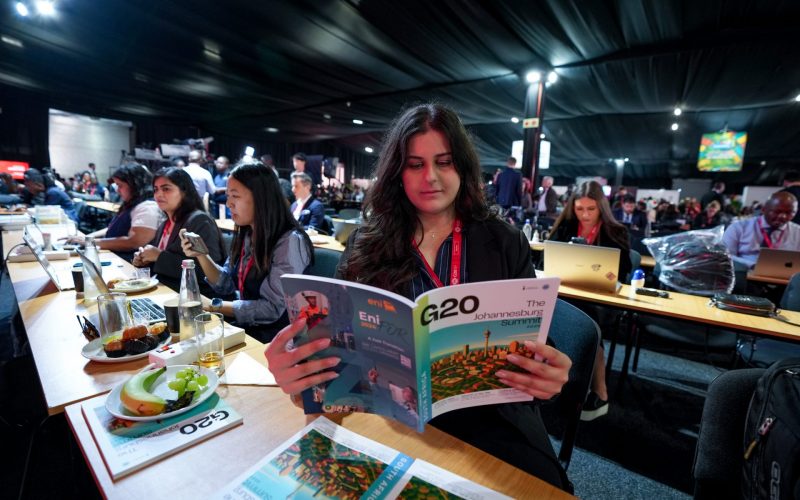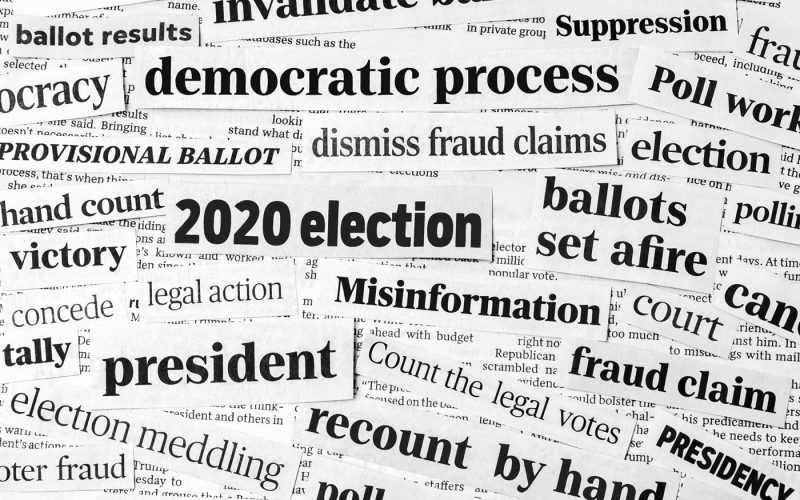On 13 June 2025, Israel launched a massive airstrike operation involving over 200 fighter jets, targeting key Iranian military and nuclear facilities, including the Natanz Nuclear Facility. The surprise attack killed top Iranian military commanders and nuclear scientists, triggering a 12-day direct conflict between the two nations.
Iran retaliated with ballistic missiles and drones targeting Israeli cities and military sites, escalating the confrontation beyond previous shadow warfare. The US intervened on the ninth day, striking Iranian nuclear sites to defend Israel. After intense exchanges causing casualties on both sides, a ceasefire was agreed on 24 June 2025.
This 12-day crisis proved to be a crucial test for BRICS, revealing the bloc’s characteristic caution in navigating complex geopolitical issues. With six members condemning Israel and four remaining neutral or cautious, the response pattern reflected BRICS’s consensus-based approach rather than any fundamental divisions.
What Led to the Strikes
The attacks followed the collapse of nuclear negotiations, with US President Donald Trump’s 60-day deadline expiring on 12 June. Iran had advanced its enrichment programme to 60% purity, while Israel viewed Iran’s weakened proxy network, damaged by the Gaza and Lebanon conflicts, as creating a strategic window for comprehensive action before Iran’s nuclear programme became irreversible.
How the International Community Responded
Israel justified the strikes as pre-emptive self-defence against Iran’s nuclear threats. Iran combined limited military retaliation with intensive diplomatic efforts to isolate Israel internationally. The UN Security Council remained paralysed by competing narratives, the US defended Israel’s actions and European nations expressed concern without explicit condemnation.
BRICS’s Cautious Response
The crisis exposed BRICS’s distinctive approach to international conflicts, prioritising consensus over swift action. Six members condemned Israel’s actions in varying degrees and four took more cautious positions, a pattern reflecting the bloc’s ‘agreeing to disagree’ principle rather than deep divisions.
Russia described the strikes as ‘unjustifiable on legal, political, military or ethical grounds’, while China leveraged its position as chair of the 2025 Shanghai Cooperation Organization (SCO) to condemn violations of Iranian sovereignty. Brazil denounced ‘clear violations of sovereignty and international law’, with South Africa highlighting concerns over civilian protection. Egypt led 21 Arab and Islamic nations demanding immediate cessation, and Indonesia described the strikes as ‘grave breaches’ threatening regional stability.
However, India explicitly refused to join the SCO condemnation, urging ‘both sides to use dialogue and diplomacy’, reflecting its complex relationships with both Iran and Israel. The United Arab Emirates maintained a bridging role, ‘quietly keeping channels open with both sides’ while still signing Egypt’s broader statement. Ethiopia issued no comment, likely reflecting its close ties with Israel.
The bloc eventually produced a joint statement on 24 June – coinciding with the ceasefire – condemning strikes on Iranian territory but notably avoiding naming Israel. This timing demonstrated BRICS’s preference for measured diplomacy that supports de-escalation rather than inflaming tensions during active conflicts.
What it Signifies
The fractured response reveals that BRICS will remain primarily an economic coordination mechanism rather than a comprehensive alternative to Western institutions. Traditional bilateral relationships proved more decisive than multilateral solidarity during the crisis. The July Rio BRICS summit is likely to produce similarly limited diplomatic language, reflecting members’ acceptance that other forums may better handle security discussions.
